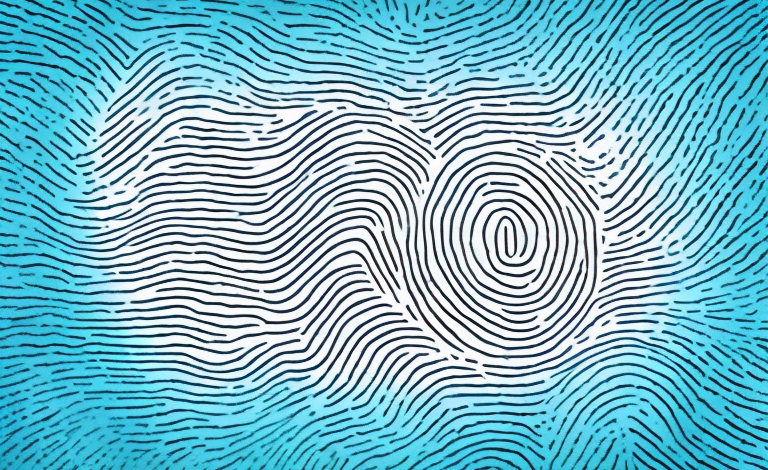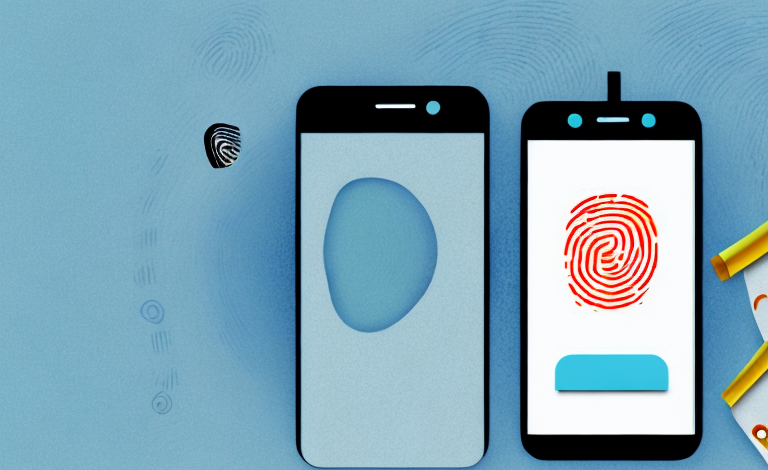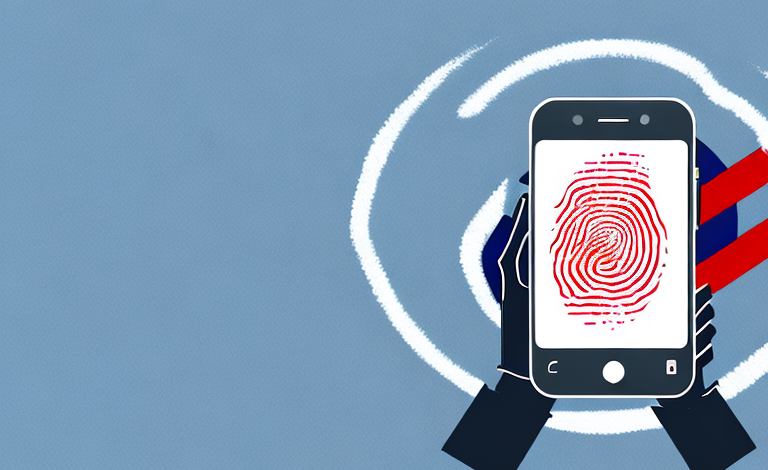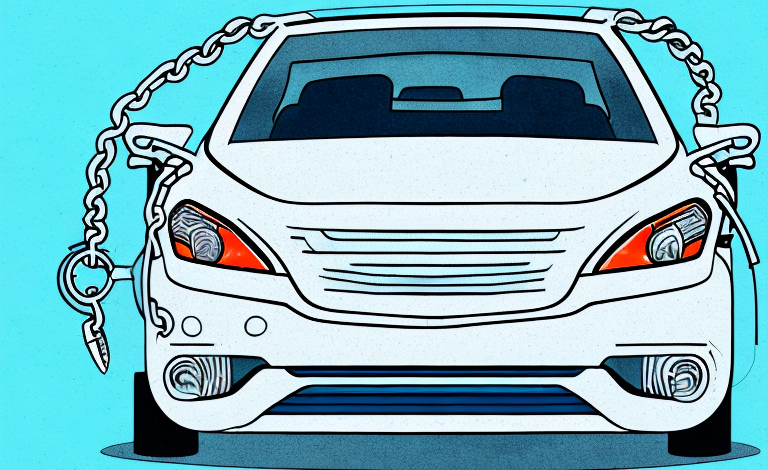Fingerprint identification is one of the most commonly used methods to identify individuals, especially in criminal investigations. The uniqueness of fingerprints has been widely accepted, and it is believed that no two people can have identical fingerprints. While there have been a few cases where people have claimed to have similar fingerprints, forensic experts argue that this is unlikely and is attributable to errors in identification.
Understanding the science of fingerprints
Fingerprints are ridges and valleys on the surface of the skin, created by the dermal papillae layer beneath the epidermis. The dermal papillae not only provide friction so that objects can be grasped, but also contain sweat pores that release moisture. The sweat released by these pores mixes with oils, dirt, and bacteria on the skin’s surface to create a unique pattern of ridges and valleys that forms the fingerprint.
Forensic scientists use fingerprints as a means of identification because each person’s fingerprints are unique. Even identical twins have different fingerprints. The uniqueness of fingerprints is due to the fact that they are formed randomly during fetal development and are influenced by factors such as genetics and the environment in the womb.
Fingerprints have been used for identification purposes for over a century. The first systematic use of fingerprints in criminal investigations was in the late 19th century by Sir Francis Galton. Today, fingerprints are used not only in criminal investigations but also in other areas such as immigration, banking, and security clearance.
How and why fingerprints are unique to each person
There are three basic types of ridge patterns in fingerprints: arches, loops, and whorls. Each person’s fingerprint is formed by the combination of these ridge patterns and their minutiae points, which are the ridge endings and bifurcations. The chance of two people having the same combination of ridge patterns and minutiae points is estimated to be less than one in 64 billion, making every fingerprint unique.
Fingerprints are not only unique to each person, but they also remain unchanged throughout their lifetime. This is because the ridge patterns and minutiae points are determined by genetics and the development of the fetus in the womb. Even identical twins have different fingerprints.
Fingerprints have been used for identification purposes for over a century, and they continue to be a reliable and widely used method of identification in law enforcement and forensic investigations. In addition to identifying individuals, fingerprints can also provide information about a person’s age, gender, and occupation based on the patterns and characteristics of their prints.
The history of fingerprint identification in criminal investigations
Fingerprint identification has been used as a forensic tool for more than 100 years. The first systematic use of fingerprints for identification purposes was introduced in the late 19th century by Sir Francis Galton, an English scientist, who argued that fingerprints were unique to each person. Today, fingerprint identification is widely used by law enforcement agencies around the world to identify suspects in criminal investigations.
Advancements in technology have greatly improved the accuracy and speed of fingerprint identification. Automated fingerprint identification systems (AFIS) were first introduced in the 1980s, allowing for faster and more efficient matching of fingerprints. In recent years, mobile fingerprint scanners have also been developed, allowing law enforcement officers to quickly identify suspects in the field. Despite these advancements, fingerprint identification remains one of the most reliable and widely used forensic tools in criminal investigations.
Are identical twins’ fingerprints the same?
Identical twins have nearly identical DNA, but their fingerprints are unique. While they may have similar ridge patterns and minutiae points, the details of their fingerprints are still different.
This uniqueness in identical twins’ fingerprints is due to the fact that fingerprints are not solely determined by genetics. They are also influenced by environmental factors, such as the position of the fetus in the womb and the pressure and movement experienced by the fingers during fetal development. Therefore, even though identical twins share the same DNA, their fingerprints can still be distinguished from each other.
How do fingerprints form during development?
Fingerprints are formed during fetal development, at around the 10th week of gestation. The unique ridge patterns and minutiae points are thought to be determined by genetic and environmental factors, such as the pressure exerted by the fetus against the uterine wall. Once formed, fingerprints remain unchanged throughout a person’s life, except in cases of injury or disease.
Interestingly, fingerprints are not unique to humans. Many other primates, as well as some non-primate mammals, also have distinct patterns on their fingers and toes. However, the specific ridge patterns and minutiae points are unique to each individual, making fingerprints a valuable tool in forensic science and identification.
The role of genetics in determining fingerprint patterns
Genetics plays a significant role in determining ridge patterns and minutiae points, but it is not the only factor. Studies have shown that identical twins, who have the same DNA, do not have identical fingerprints. Environmental factors, such as pressure during fetal development, also contribute to the formation of fingerprints.
Another factor that can influence fingerprint patterns is age. As we age, our skin loses elasticity and the ridges on our fingertips become less pronounced. This can make it more difficult to obtain clear fingerprints, especially for older individuals.
In addition, certain medical conditions can also affect fingerprint patterns. For example, individuals with Down syndrome often have a single transverse palmar crease, which can make it more difficult to identify their fingerprints. Similarly, individuals with eczema or other skin conditions may have distorted or incomplete fingerprints.
False positives and false negatives in fingerprint identification
While fingerprint identification is generally considered to be a reliable method for identifying individuals, errors can occur. False positives occur when two different people have similar ridge patterns and minutiae points, leading to a wrong identification. False negatives occur when a true match is not found, either due to poor quality of the fingerprint or errors in the identification process.
One way to reduce the occurrence of false positives and false negatives is to use multiple factors for identification, such as combining fingerprint analysis with facial recognition or iris scanning. Additionally, proper training and certification of analysts who perform fingerprint identification can also help to minimize errors.
The use of fingerprints in everyday life beyond criminal investigations
Fingerprint identification is not limited to criminal investigations. Fingerprint scanners are now commonly used in everyday life, such as in unlocking smartphones and accessing secure areas. This technology has significantly improved since its inception, and various unique fingerprint patterns can now be recognized using advanced algorithms.
In addition to unlocking smartphones and accessing secure areas, fingerprints are also used in other areas of everyday life. For example, some banks now use fingerprint scanners to verify the identity of customers when they access their accounts. This provides an extra layer of security and helps to prevent fraud. Fingerprint technology is also used in healthcare, where it can be used to accurately identify patients and ensure that they receive the correct treatment. As the technology continues to improve, it is likely that we will see even more uses for fingerprints in everyday life.
How technology has advanced fingerprint analysis and identification
Advances in technology have revolutionized fingerprint analysis and identification. The use of automated fingerprint identification systems (AFIS) has simplified the process of identifying fingerprints, allowing law enforcement agencies to process and compare large amounts of data quickly. In addition, the use of 3D fingerprint scanners has provided a more detailed and accurate image of fingerprints for identification.
Moreover, the development of artificial intelligence (AI) has further enhanced the accuracy and speed of fingerprint analysis. AI algorithms can analyze and match fingerprints with a high degree of accuracy, reducing the risk of human error. Additionally, the use of machine learning in fingerprint analysis has enabled the system to learn and improve over time, making it more efficient and effective in identifying fingerprints.
The limitations and potential errors of fingerprint identification
While fingerprint identification is considered to be a reliable method, there are still limitations and potential errors. Poor-quality fingerprints, such as smudged prints, can lead to errors in identification. In addition, errors can occur if the fingerprint data is not properly recorded or if there is an error in the identification process.
Another limitation of fingerprint identification is that it may not be effective in cases where the suspect has intentionally altered their fingerprints. This can be done through various methods, such as burning or cutting the fingertips. In such cases, other methods of identification, such as DNA analysis, may need to be used.
Furthermore, there have been cases where two individuals have been found to have identical fingerprints, also known as a false positive. This can occur in cases where the individuals are identical twins or have a very similar genetic makeup. In such cases, additional methods of identification may need to be used to confirm the identity of the individual.
Current debates over the legality and ethics of using fingerprints for identification purposes
The use of fingerprints for identification purposes has led to debates over the legality and ethics of such practices. While it is generally accepted that fingerprints are unique to each person, concerns have been raised over issues such as privacy rights and the accuracy of identification. As fingerprint technology continues to evolve, these debates are likely to persist.
In conclusion, the uniqueness of fingerprints is widely accepted and the chance of two people having identical fingerprints is estimated to be less than one in 64 billion. Fingerprint identification has been used as a reliable forensic tool for over 100 years, and advances in technology have only improved its accuracy. While limitations and potential errors do exist, fingerprint identification remains one of the most widely used and accepted methods of identifying individuals in criminal investigations and in everyday life.
However, there are concerns that the use of fingerprints for identification purposes may infringe on an individual’s privacy rights. In some cases, fingerprints may be collected without the individual’s consent or knowledge, raising questions about the legality of such practices. Additionally, the storage and use of fingerprint data may also be subject to misuse or hacking, leading to potential breaches of privacy.
Another issue that has been raised is the potential for errors in fingerprint identification. While the chance of two people having identical fingerprints is extremely low, there have been cases where fingerprint evidence has been misinterpreted or mishandled, leading to wrongful convictions. As such, it is important to ensure that proper protocols and training are in place to minimize the risk of errors in fingerprint identification.



